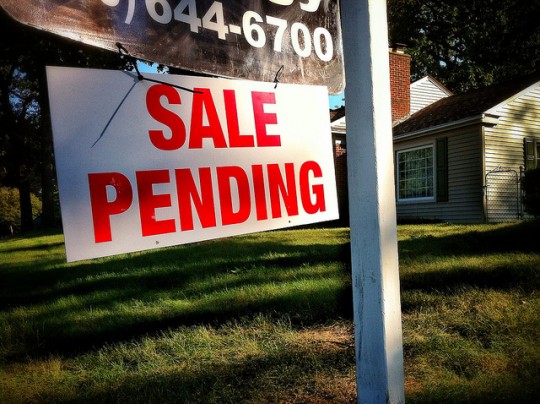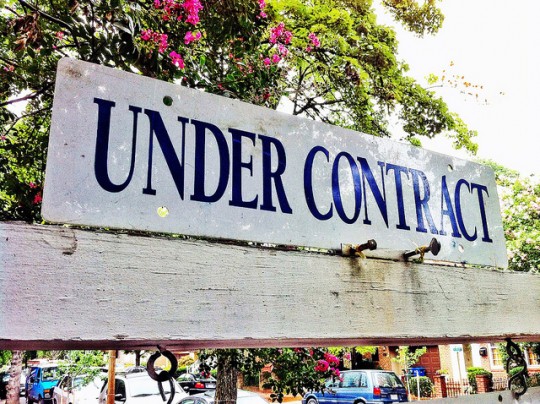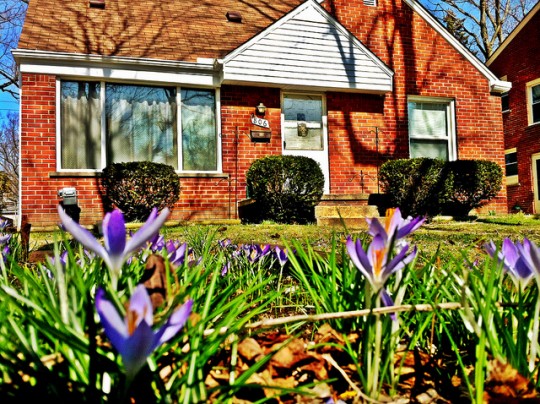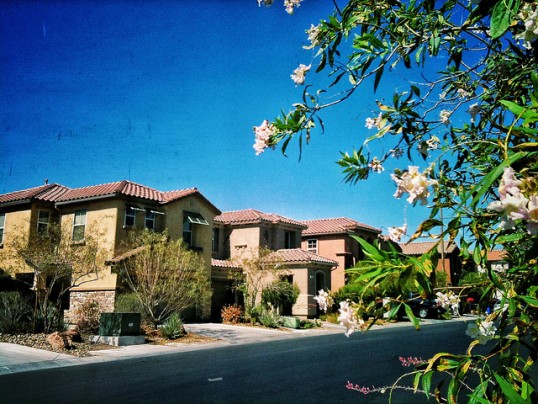According to economists and industry experts gathered at a residential real estate forum organized by the National Association of Realtors, the housing market is trending upward, though there are a combination of factors that have been holding it back in recent months. Lawrence Yun, NAR’s chief economist, said rising home prices and mortgage rates, along with low inventory and tight credit, have slowed household formation despite a large pent-up demand built up over years of below-normal home sales. The slowdown was then made worse by severe winter weather earlier this year, which dampened first quarter sales across much of the country. Despite this, analysts expect sales to improve through the end of the year and into next. Those expectations are based on demographic data and recent polls showing a majority of Americans want to own their own home. And, with nearly three million more young adults living with their parents in 2012 than in 2007, it’s only a matter of time before that demand results in higher home sales. Eric Belsky, managing director of the Joint Center for Housing Studies at Harvard University, said – because household formation numbers are at least a million households below where they should be – there could be a notable uptick later this year. More here.
Tag Archive for NAR
Pending Home Sales Show Signs Of Spring
The National Association of Realtors’ Pending Home Sales Index measures the number of contracts to buy homes signed each month. The index – which is a good indicator of future sales of previously owned homes – jumped 3.4 percent in March, beating economists’ expectations and providing the first signs of a spring sales spike. Lawrence Yun, NAR’s chief economist, said the gain was inevitable. After a slow winter, buyers had an opportunity to look at homes and are beginning to make offers, Yun said. Regionally, pending sales were up in the Northeast, South, and West, falling only in the Midwest, where they slipped 0.8 percent. Home sales are expected to trend upward this year, as more homes are put up for sale and the economy and job market continue their ongoing recovery. Still, despite the fact that existing-home sales are expected to rise throughout this year and next, total sales in 2014 will likely be lower than they were the year before. The NAR expects total sales to reach 4.9 million this year. In 2013, sales were estimated at nearly 5.1 million. More here.
Existing Home Sales Flat In March
Sales of previously owned homes were virtually unchanged in March, according to new data from the National Association of Realtors. Existing home sales – which include single-family homes, townhomes, condominiums, and co-ops – were 0.2 percent below February’s rate and 7.5 percent below year-before levels. Lawrence Yun, NAR’s chief economist, said that sales activity is slow by historical standards. There should really be stronger levels of home sales given our population growth, Yun said. Still, Yun believes there will be improvement in the months ahead, due to continued gains in the job market and sales of homes that were delayed over the winter because of harsh weather. Regionally, home sales were up in the Northeast and Midwest but fell in the South and West. Housing inventory – which drives price increases when low – improved in March, with unsold inventory up 3.1 percent from a year ago. There were 1.99 million previously owned homes available for sale at the end of the month. At the current sales rate, that represents a 5.2-month supply, up from a 4.7-month supply one year ago. Also, the median existing-home sales price for all housing types was $198,500. More here.
The Benefits Of A Bigger Down Payment
Data from the National Association of Realtors’ Confidence Index Survey finds fewer first-time home buyers obtaining mortgages with a down payment of 6 percent or less. In fact, the number of first-time buyers who put down 6 percent or less had dropped to 61 percent by February, down from 74 percent in 2009. Though there are a number of factors causing buyers to put down more money when buying their home, the benefits of a higher down payment remain the same. The more money you put down when purchasing a house, the lower your monthly mortgage payment will be. According to the NAR, saving for a higher down payment also betters the odds that a prospective buyer can obtain a loan from their bank, in addition to increasing the likelihood of winning a bid for a particular property should there be multiple offers on a home. In short, the more money you’re able to put forth as a down payment, the more attractive you’ll be to mortgage lenders and home sellers. In a competitive market, where demand is still higher than supply, a higher down payment can help provide an edge over other potential buyers in your area. More here.
Pending Home Sales Flat But Stabilizing
Pending home sales are a forward-looking indicator of future existing-home sales based on the number of contracts to buy homes that are signed during the month. In February, contract signings slipped 0.8 percent, according to the National Association of Realtors. Lawrence Yun, NAR’s chief economist, said pending home sales have been little changed over the past three months, which indicates the market is stabilizing. Buyer traffic has increased modestly as the spring selling season begins and there is an expectation that some transactions that were delayed due to winter weather will now close. According to Yun, this suggests that the home sales slowdown may now be behind us. Regionally, the report was a mixed bag. Pending sales were up in the Midwest and West, while falling in the Northeast and South. Overall, contract signings are 10.5 percent below year-before levels. More here.
Home Sales Expected To Pick Up In Spring
The number of previously owned homes sold in February was virtually unchanged from the month before, according to data recently released by the National Association of Realtors. Total existing-home sales dropped just 0.4 percent from January and are now 7.1 percent below year-before levels. Lawrence Yun, NAR’s chief economist, said there were unusual weather disruptions across much of the country in February and that, along with constrained inventory and less favorable affordability conditions, led to a largely unchanged sales rate. But Yun expects sales to pick up over the months ahead, adding that some transactions are simply being delayed and, with an expected improvement in job creation, home sales should trend up modestly over the course of the year. In fact, in regions where winter weather wasn’t an issue, home sales have already risen. The West and South both saw sales increases in February, while the Midwest and Northeast experienced declines. Also, the median existing-home price for all housing types was $189,000, which is 9.1 percent above February 2013. More here.
Younger Buyers More Confident In Market
The Millennial generation, which includes people born between 1980 and 1995, are now reaching the age of the typical first-time home buyer. And, according to the 2014 National Association of Realtors Home Buyer and Seller Generational Trends study, younger buyers are now purchasing the most homes and are the most optimistic about their home’s value as an investment. Lawrence Yun, NAR’s chief economist, said Millennials aspire to own their own home and, since they are the largest generation in history after the Baby Boomers, it means there is potential for strong underlying demand. In fact, young adults were the most likely to say their reason for buying a home was to own a house of their own, as opposed to older adults who cited retirement or the need to move closer to family and friends. Younger buyers were also more likely to move to an urban area, stay close to their previous residence, and place higher importance on commuting costs as opposed to energy efficiency, landscaping, and community features. According to the study, the median age of Millennial home buyers was 29 and they typically bought a 1,800-square-foot home that cost $180,000. More here.







